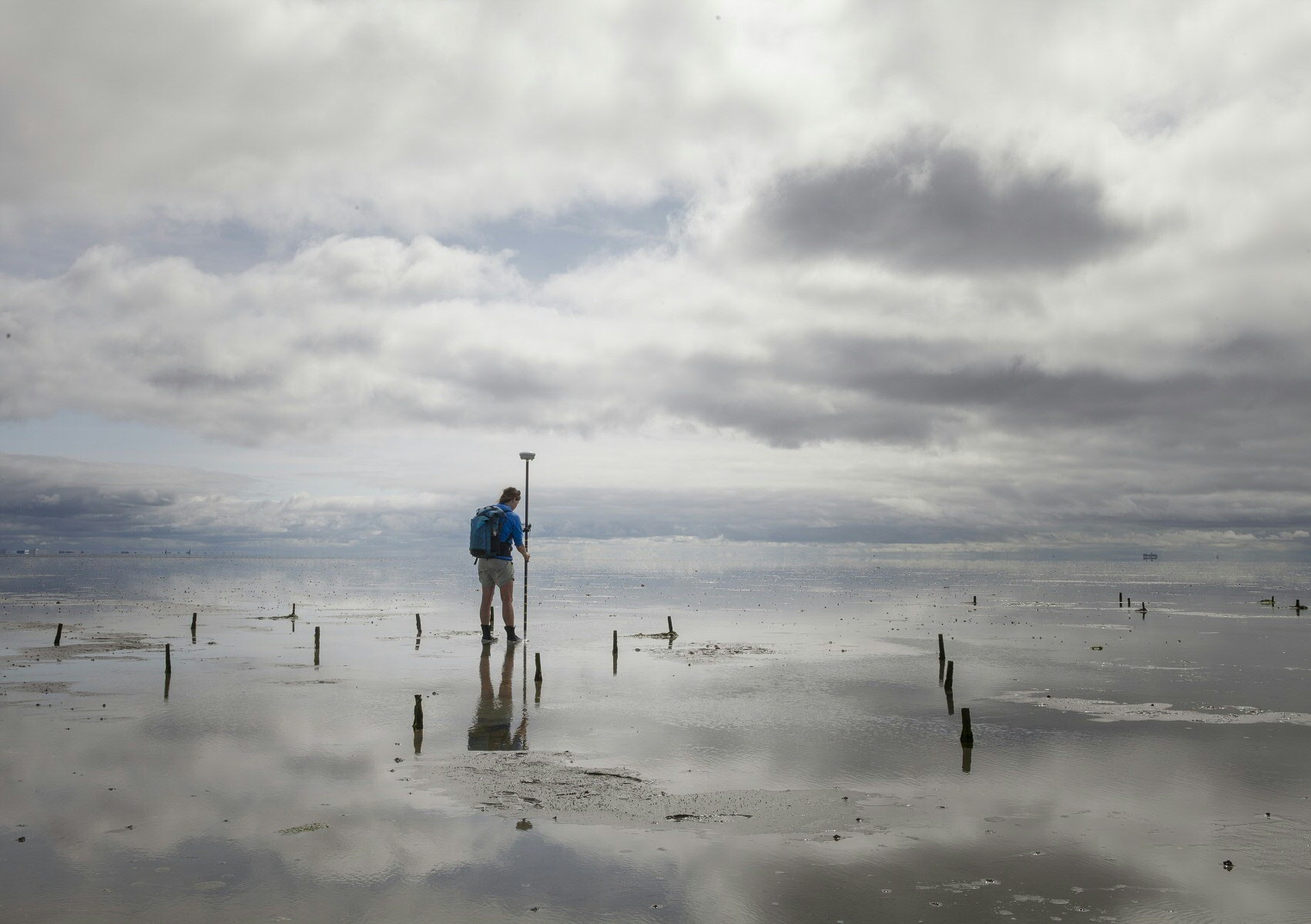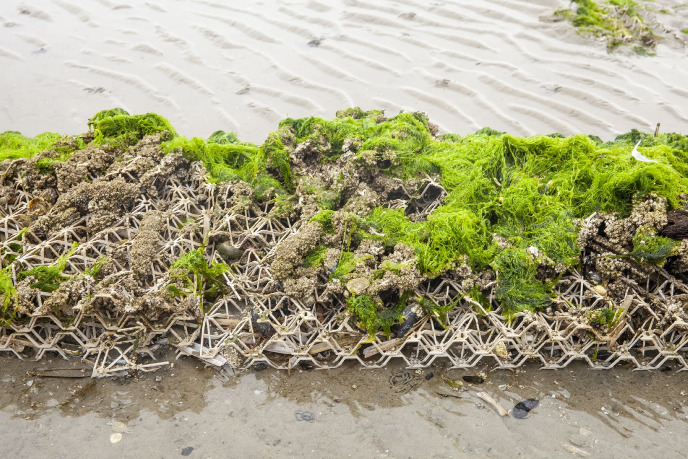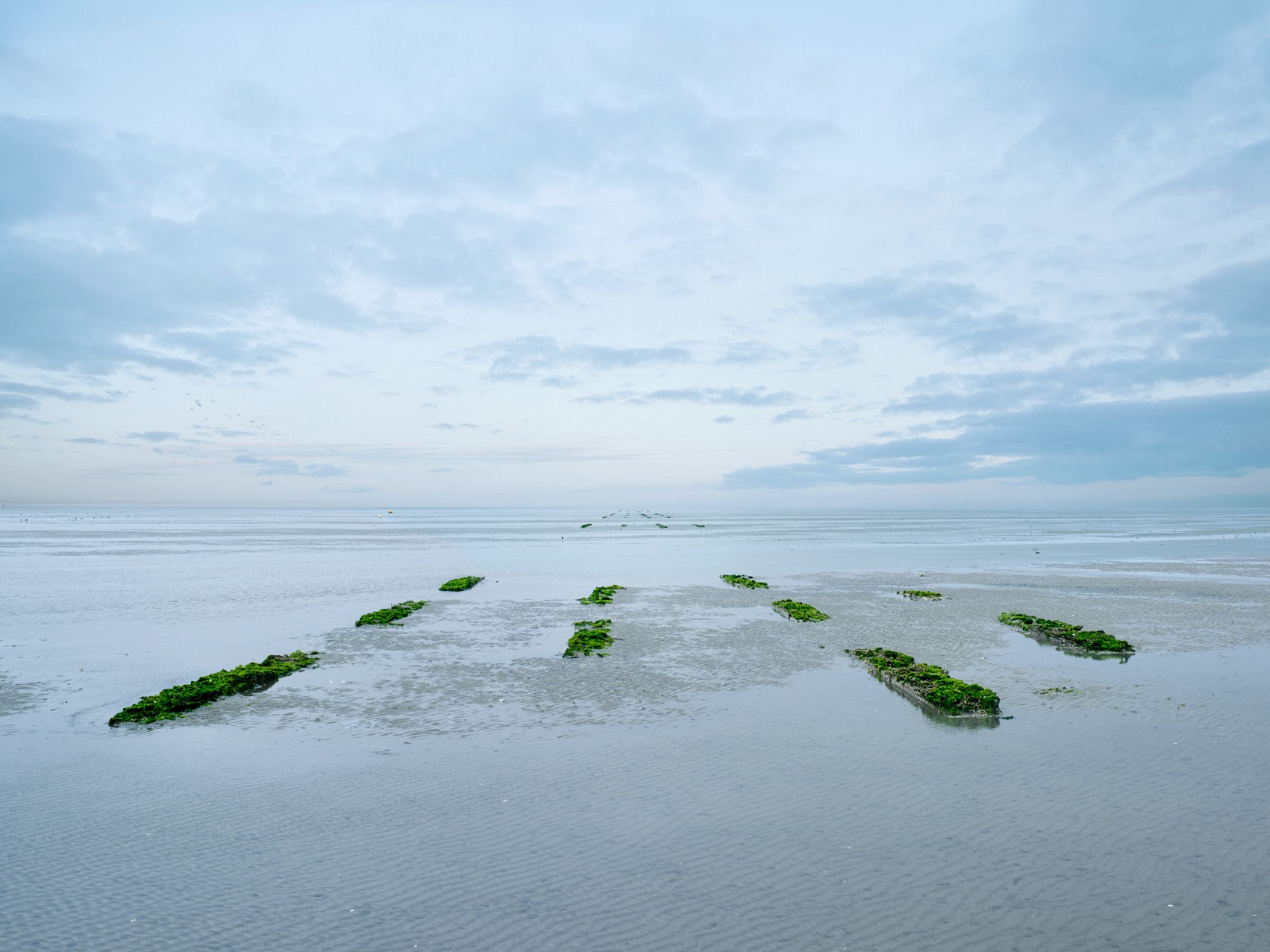Seagrass restoration in the Wadden Sea
Once upon a time, the Netherlands comprised vast seagrass meadows and had a thriving seagrass industry. The plants were used for dyke reinforcement, mattress filling, insulation material, and fertilizer. As a result of disease, the dam and causeway the Afsluitdijk, eutrophication, and interference, this extensive seagrass (Zostera marina) has all but disappeared. And with it, a remarkable ecosystem also disappeared, because seagrass is an important plant for the Wadden Sea and other similar shallow coastal seas. The grass retains the soil, dampens the swell, and offers food and protection to all kinds of animals.
Marine ecologist Laura Govers conducts research into seagrass restoration at the UG and at the NIOZ (Royal Netherlands Institute for Sea Research). On the Dutch island Griend, Laura booked success when she planted out young seagrasses that took root and have, by now, reproduced and formed modest new seagrass meadows. Commissioned by the UG, Eddo Hartmann made photographs about Laura Govers' research for the Collective Landscape series.








| Last modified: | 13 June 2024 12.28 p.m. |
More news
-
07 April 2025
Plastic recycling: how to best reuse carbon atoms
Scientists at the University of Groningen are working on new ways to recycle plastic waste into new, high-quality products.
-
07 April 2025
Gratama Jubilee gift for Marleen Kamperman and Marijke Leliveld
Prof. Marleen Kamperman and Marijke Leliveld received EUR 100,000 from the Gratama Foundation for their research project aimed at producing organic textiles for sustainable fashion.
-
03 April 2025
IMChip and MimeCure in top 10 of the national Academic Startup Competition
Prof. Tamalika Banerjee’s startup IMChip and Prof. Erik Frijlink and Dr. Luke van der Koog’s startup MimeCure have made it into the top 10 of the national Academic Startup Competition.
